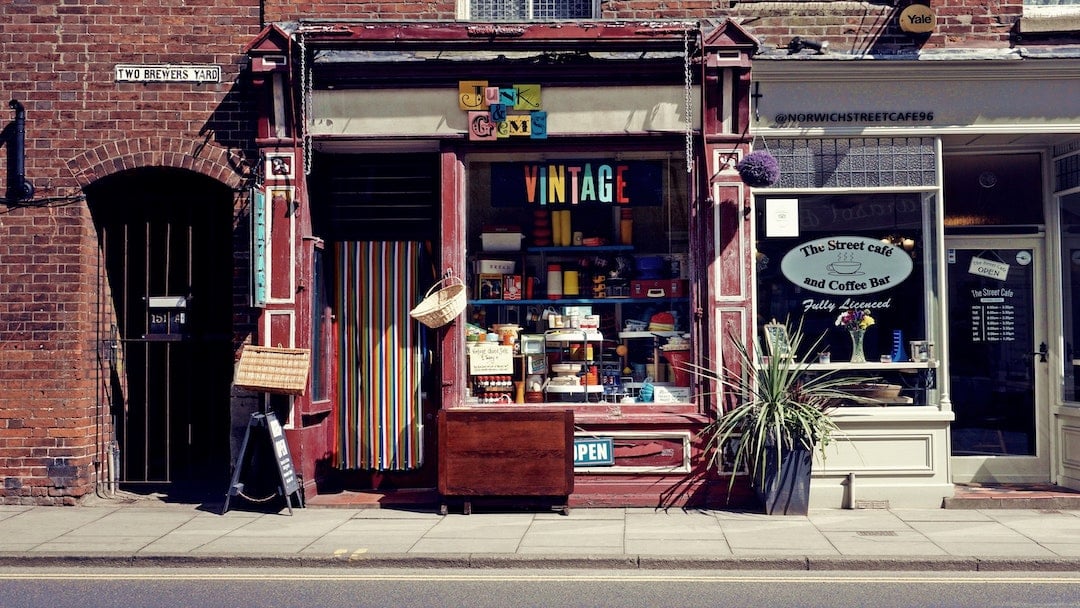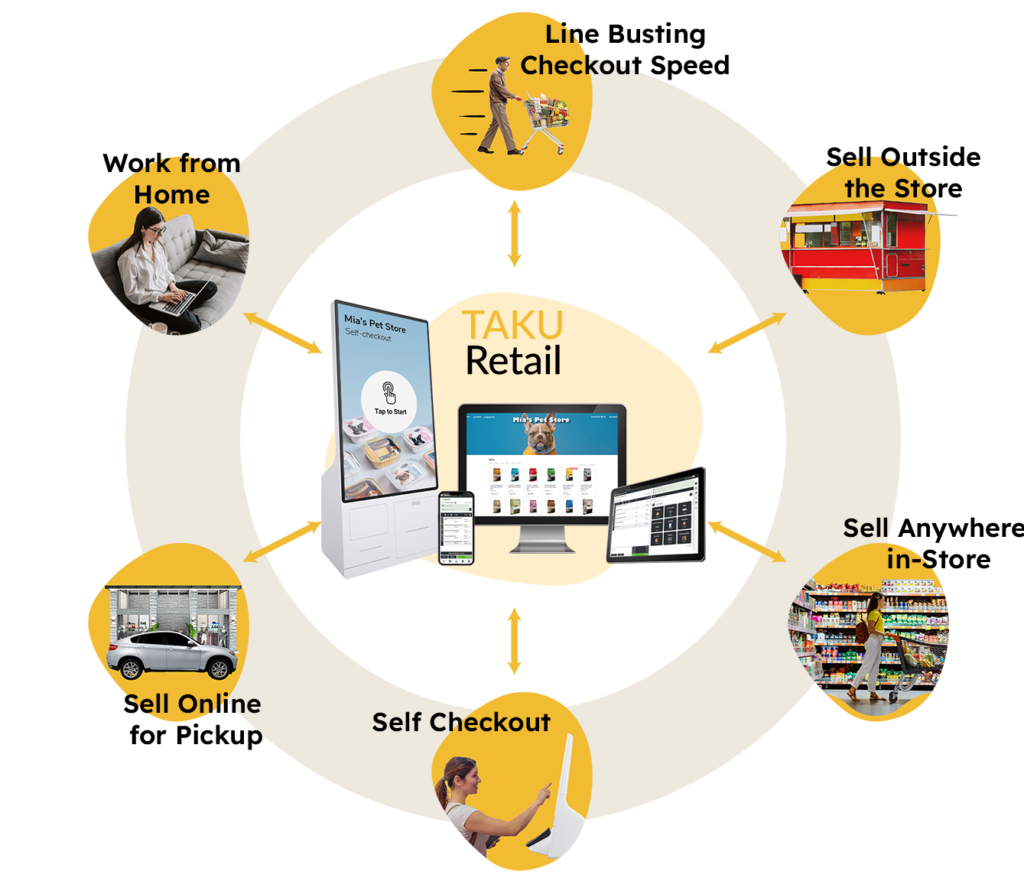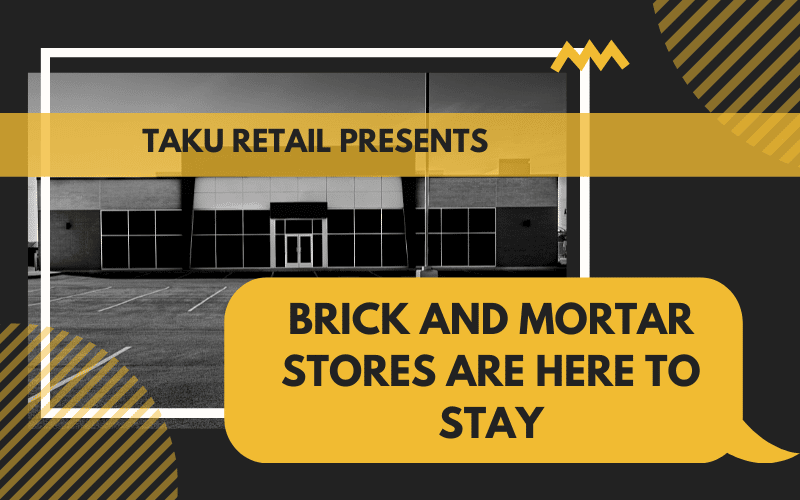The rise of e-commerce during the pandemic has led many people to believe that that physical retail stores will soon be a thing of the past. After all, e-commerce feels more convenient as you can shop from the comfort of home. Even Google has seen an increase in the number of people wondering whether brick and mortar stores are dying.

We’re glad to report that, like many future predictions, the reality is a lot less scary. As post-pandemic studies and recent data has shown, physical retail is still thriving and here to stay.
E-commerce is not the only future

While e-commerce grew in popularity during the pandemic, post-pandemic statistics show that people are returning to their old ways. E-commerce sales in 2022 have slowed down. Some of this is likely pent up demand for shoppers who missed shopping in person during the pandemic. But according to research, 59% of shoppers do not trust internet-only brands. At the same time, e-commerce only companies continue to struggle to turn a profit. Many companies who bet on an e-commerce only future are now paying the price.
Brick and mortar retail stores are continuing to grow

Even after all of the COVID-19 lockdowns, brick & mortar retail stores are thriving. In fact, for every brick and mortar business that shut down, two more businesses opened up. On top of that, sales in physical retail have actually gone up post-pandemic. In-store shopping has seen a 13.7% boost compared to pre-pandemic levels. This growth doesn’t just apply to big names like Walmart, but to small independently owned businesses as well! In fact, over 60% of small businesses are expected to grow their revenue over the next year. This is a trend that can be seen from pre-pandemic statistics as well. Reports show that between 2016 – 2021, the revenue of smaller retailers grew at an average of 51.33%.
And certain consumers actually prefer in-store shopping. The majority of Boomers and Gen X customers say that they shop in-store “all the time”. In fact, younger people such as Gen Z (along with Gen X) are two generations that actually shop more in-person than online. For them, their entire lives are already digital and physical retail appeals to them as experiential shopping
The shopping experience is too important

Another key reason why brick & mortar stores still appeal to shoppers is because it is still by far a better shopping experience. At the beginning we mentioned how e-commerce provides a certain level of convenience that physical retail can’t. Yet when it comes to immediate consumption, this is something that only physical shopping can offer. There is a level of satisfaction one can feel shopping in-store and taking something home right away. This is why the term retail therapy exists.
But beyond immediate satisfaction, shopping at brick and mortar stores allows customers to get an engaged shopping experience that they simply can’t find online. Being able to physically hold a product and sometimes try it out before purchase is a big factor in deciding to buy something. 59% of consumers say that the ability to try, touch and feel a product is key for in-store shopping over online.

And when shopping in-store, one of the top priorities for shoppers is convenience, especially at checkout. After all, 97% of consumers have backed out of a purchase due to inconvenience. So if you are in or planning to enter the physical retail industry, be sure to offer easy checkout options. Things like self-checkout enhance the shopping experience for customers greatly.
The future is omnichannel

Throughout this post, it may have felt like we are saying that e-commerce is worse than physical retail. However, the future of the retail today is really a combination of physical and digital shopping. As we mentioned before, consumers want convenience. Omnichannel offers the most convenience to consumers as it allows them to shop from anywhere, 24/7. There’s a reason why 58.6% of retailers are heavily investing in omnichannel fulfillment and 70% of small businesses have adopted digital tools over the past year.
The benefits of omnichannel aren’t just for customers either. Retailers are able to have more control over their business and sell more when they offer omnichannel shopping. After all, retailers who don’t sell on multiple channels end up missing out on ~30% of sales.
Being able to serve your customers in a variety of channels will soon be the standard in retail. For e-commerce, store pickup or fulfillment of online orders from local stores support main streets, is better for the environment and get products to customers faster as delivery costs increase. In order to keep up with the future, your retail business needs to be an omnichannel one.
Now, more than ever, is the best time to invest in omnichannel! Make sure your business is future-proof by implementing software that can support your business over time. Check out TAKU Retail and ensure your business is resilient and able to serve customers the way they expect to shop today.



